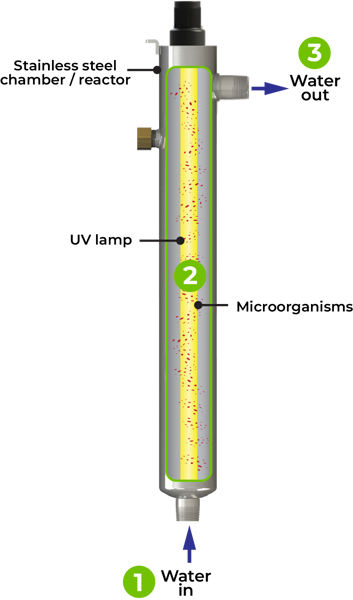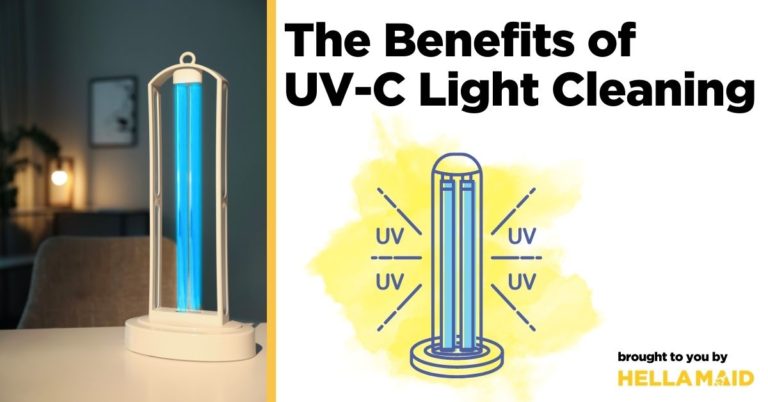The Ultimate Guide To Uvc Light
The Ultimate Guide To Uvc Light
Blog Article
What Does Uvc Light Do?
Table of ContentsUnknown Facts About Uvc LightFascination About Uvc LightWhat Does Uvc Light Mean?Uvc Light Fundamentals ExplainedHow Uvc Light can Save You Time, Stress, and Money.Things about Uvc Light
A brand-new kind of ultraviolet light that might be secure for people took much less than five minutes to lower the level of interior air-borne microbes by greater than 98%, a joint study by researchers at Columbia University Vagelos College of Physicians and Surgeons and in the U.K. has actually found. Even as microorganisms remained to be sprayed into the space, the degree remained extremely reduced as lengthy as the lights got on.Until now these researches had actually just been conducted in little speculative chambers, not in full-sized areas resembling real-world conditions. In the current research study, researchers at the College of St. Andrews, University of Dundee, College of Leeds, and Columbia University checked the efficiency of far-UVC light in a large room-sized chamber with the very same ventilation price as a regular home or workplace (regarding three air modifications per hour).
The efficacy of different strategies to decreasing interior virus levels is normally gauged in regards to equal air adjustments per hour. In this research, far-UVC lights generated the matching of 184 equal air exchanges per hour. This goes beyond any kind of various other technique to sanitizing busy indoor spaces, where five to 20 equivalent air adjustments per hour is the very best that can be attained almost.
The 6-Minute Rule for Uvc Light

The major criteria of UV-C sanitation are wavelength, dosage, family member moisture, and temperature. There is no consensus concerning their optimum worths, however, generally, light at a high dose and a spectrum of wavelengths containing 260 nm is preferred in a setting at space temperature with low relative moisture. This light can be produced by mercury-vapour, light-emitting diode (LED), pulsed-xenon, or excimer lamps.
UV-C sanitation systems have encouraging functions and the possible to enhance in the future. UV-C disinfection need to currently be considered for low-level instead than high-level sanitation.
Another application arose in 1910 when UV light was used to sanitize water. Nowadays, UV light is utilized for water, air, food, surface, and medical devices disinfection.
Unknown Facts About Uvc Light
DNA, RNA, or proteins of a micro-organism absorb UV light, with a peak absorbance around 260 nm [6] This results in the interruption of DNA or RNA, leading to the inactivation of the micro-organism. UV-C-induced DNA disturbance typically contains the bonding of two neighbouring thymine (or cytosine) bases instead of the traditional connecting of a base with its corresponding base on the other strand.

Dark fixing, on the other hand, calls for multiple enzymes and nutrients for energy [6] It is important to understand whether final inactivation results have actually taken into account the event of reactivation considering that it may lead to 60% of the achieved inactivation being reversed [7] Mutations can develop upon UV-C exposure because this direct exposure can result in the source of intra-strand cyclobutyl-pyrimidine dimers in DNA [ 6] The UV-C zone is utilized for sanitation but there is no consensus on the specific optimum wavelength. Bacterial DNA and RNA have peak absorbances of light at 260265 nm and around 260 nm, respectively [6] Light at 260 nm can create the most disruption (uvc light). Different micro-organisms are most vulnerable to slightly different wavelengths.
The 6-Second Trick For Uvc Light
On the various other hand, it has technical ramifications because the complete site web energy of the light beam of light is then separated over all present wavelengths. A micro-organism that is at risk to 254 nm light will be suspended much more by a light that releases solely light at 254 nm than a lamp that releases a wavelength spectrum at equal total energy.
Direct exposure times of 1045 min for area disinfection and 25 s to 5 minutes for medical devices were encountered in literary works. The strength is inversely symmetrical to the made even distance in between the light and the surface area and is consequently specified at the surface area in the dosage estimation formula [14]
Even more, the outcome of a light reduces over time, so it is advised to compute the dosage at the end of lamp life, which is representative of a worst-case situation. The dose additionally influences the amount of photoreactivation.
The impact of temperature level depends on the light resource.
More About Uvc Light


This is referred to as far UV-C technology and is a relatively new sanitation approach with restricted understanding concerning its efficiency. This makes it riskier to totally rely upon this technology for disinfection in the health center and it is consequently not extensively utilized [21] However, it also has advantages such as a minimized risk for usage near individuals because of a lower infiltration deepness into the skin and eyes [ 26]
In study, the results on pulsed versus continual UV-C disinfection performance vary. When contrasting pulsed and constant light it is essential to maintain various other variables such as wavelength and dose consistent. Nyangaresi et al. and Sholtes et al. both discovered i was reading this that pulsed or continual light discharged by LEDs resulted in equivalent log10 reductions [15,28]
The Single Strategy To Use For Uvc Light
In situation ozone is not needed for sanitation, a changed lamp can be used. For mercury-vapour lamps, doped quartz glass or specialized soft glass can strain short-wave UV-C light. For pulsed-xenon, drugged quartz can be made use of too [30] UV-C has promising features for disinfection such as automatic disinfection, being less lengthy than commonly utilized handbook or chemical disinfections, leaving no dangerous residuals, and being eco-friendly (if no mercury-vapour lights are used) [31,32]
Report this page